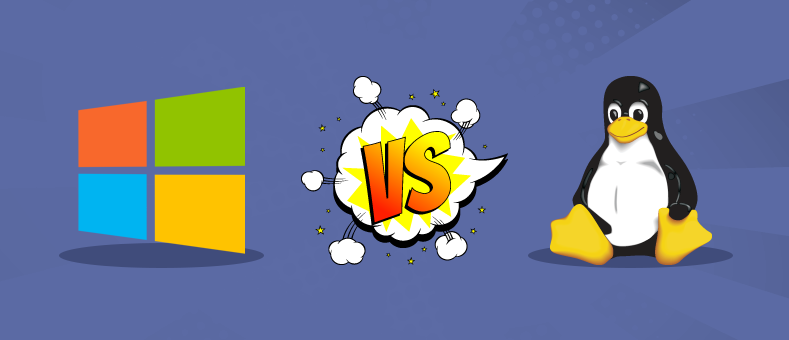
Comparing Windows and Linux
Microsoft Windows and Linux are two of the most major operating system of the world. Both have their own user base and is liked by a wide range of people from all over the world.
Linux kernel was first released by Linus Torvalds on 17th September 1991. The purpose of developing Linux was to make available a free and open-source operating system to the world. Since then various versions of Linux have been released which are commonly called distributions. Debian and Redhat and Ubuntu are some of its major distributions. On the other hand, introduced as a Graphical Operating System shell for MS-DOS, Microsoft Windows has come a long way. It was first introduced on 20th November 1985 claiming the majority of the market share in just a few years. From Windows 1.0 to Windows 10, it has been creating a legacy.
In our following discussion, we will be largely discussing two platforms instead of comparing two operating systems. Platforms on which these two OS have been embarked viz. “Free-Open source” and “Closed source or proprietary”.
Open source vs closed source
It is one of the major parameters on which the two operating systems are compared.
Linux is open-source which means that its source code is accessible by everyone. It gives full authority to the users to access the source code and is open to suggestions.
It resulted in better and faster improvement of the source code as many developers from all over the globe are accessing it at the same time. But which also means that it is prone to an attack by hackers as they can find a loophole in the source code easily.
On the other hand, Windows is closed-source and no one except a handful of people are allowed to access its source code. This is completely in contrast with the Linux methodology.
Cost
Linux is an open-source operating system and free of cost. You can download the Linux kernel from various sites along with its libraries. Some companies offer paid support but the installation is completely free.
Whereas, Microsoft Windows is available in the market at an average price of $199. Hence, cost is an essential parameter one has to keep in mind while choosing among these two.
Flexibility
The Linux operating system is the most flexible operating system available in the market. As an example, you can install a desktop of your choosing. You can customize it according to your likes. Gnome, Cinnamon, and Unity are among the desktops available in the market. There are just so many options to choose from.
In case of Windows, it decides what's best for you. It provides you with a stable operating system and you have to work around it.
License
The General Public License (GPL) that the Linux operating system uses gives full freedom to the user to modify the software. You also have the permission to download the operating system and install it in multiple machines or even sell it.
In case of Windows, you can purchase a copy of the software but can only use it on a single system,
File Systems
The file systems supported by Linux is EXT2, EXT3, EXT4, Jfs, ReiserFS, Xfs, Btrfs, FAT, FAT32, NTFS. Whereas, the file system supported by Windows are FAT, FAT32, NTFS, exFAT.
User Base
Linux is used mainly by organizations relating to scientific or academic domain. It is also a primary choice for servers all around the globe. Companies like Google and Facebook have also opted for Linux to run their servers. Any systems possessing lesser configuration can also operate on Linux with no difficulty.
Microsoft Windows, on the other hand, is quite user-friendly and is an obvious choice for beginners. Also, the business owners that use Microsoft tools and software are an addition to the user base of Windows.
Through this article, we tried to draw a comparison between the two most popular operating systems available to us, the Linux operating system and Microsoft Windows with an aim to help you choose better between the two. Both these operating systems have made their mark. It’s just a matter of the user's preferences and requirement.